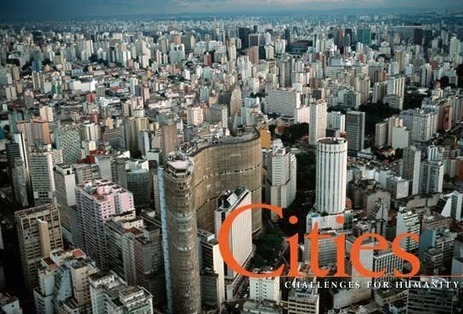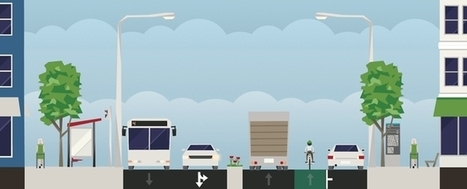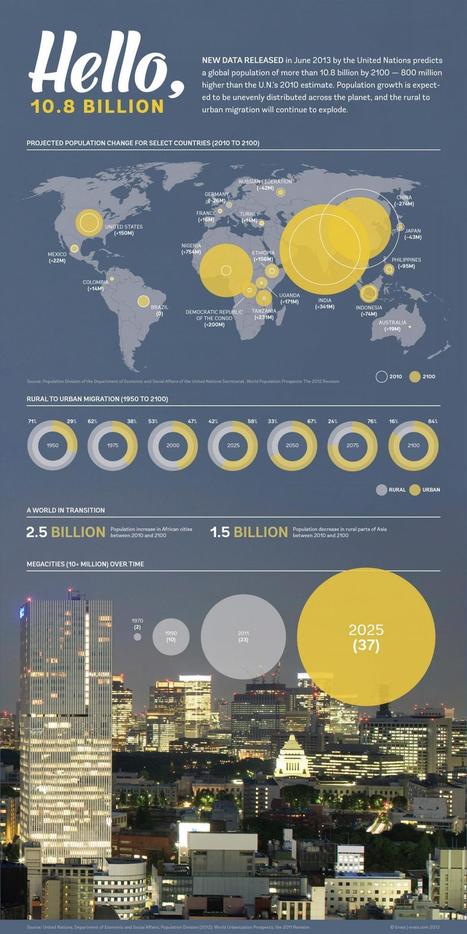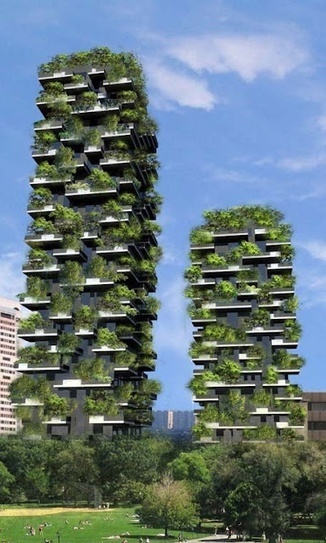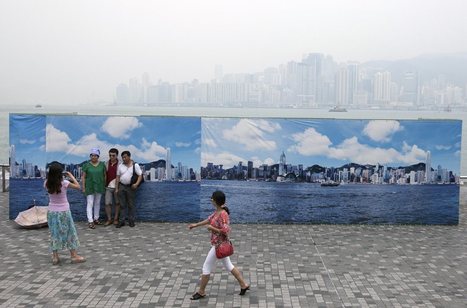Rethinking Indian cities
Times of India
Lothal, Pataliputra and Ujjain were once cosmopolitan centres, planned around commerce and geography. ...
Get Started for FREE
Sign up with Facebook Sign up with X
I don't have a Facebook or a X account
 Your new post is loading... Your new post is loading...
 Your new post is loading... Your new post is loading...
Elle Reagan's curator insight,
May 26, 2015 9:38 PM
I thought this article was good as it gave information on how the world as we know it is growing and cities are popping up everywhere. Developing countries are seeing a large increase in growth and with that comes the growth of cities. With this, more megacities will be born and hopefully the quality of life increases with life in cities.

Mathijs Booden's curator insight,
August 28, 2013 4:38 AM
The rapid pace of urbanisation in China leaves some tenacious earlier residents stranded surrounded by construction projects.The take away for me is that, in contrast to common perception, the Chinese government will not always simply bulldoze the house occupants and all.

Hannah Van Gorp's comment,
September 30, 2013 11:25 AM
yes. but if we build them closer together, what will happen when one of the buildings structure gives way? the other buildings will be in the way and will also be damaged.
Jordan Zemanek's comment,
October 1, 2013 9:38 AM
If the buildings like in these areas are closer together, it i good and bad. Windows and other things could fall from above but in some cases it protects people as well as saving money at the same time. Less energy is a plus when this happens, and others could find shelter from disasters like storms easier.
Iloria Phoenix's comment,
October 2, 2013 10:34 PM
I think that when it comes to tropical storms damaging buildings it is a no win situation because do matter what way you build them they will still be affected by the storm. Building the buildings closer together might help some costs from damage but it seems to me that the damage cost depends on how strong a storm is.
|
Aleasha Reed's curator insight,
September 27, 2013 9:14 AM
By the year 2100 our global population is calculated to reach 10.8 billion. The United States is expected to grow another 150 million by this time. Our population right now is 313.9 million right now. Our big cities will continue to grow, and new ones will arise as the years pass. 
Lanne Marie-Christine's curator insight,
November 11, 2013 2:44 AM
La démographie, une donnée déterminante pour l'évolution du climat et la pression sur les ressources naturelles. Nous finissons hélas par être trop nombreux sur terre pour ce qu'elle peut supporter au rythme actuel...
MissPatel's curator insight,
December 17, 2014 2:09 AM
A future to look forward to? Your potential future? Good, bad or ugly?

Sieg Holle's curator insight,
October 25, 2013 10:43 AM
excellent use of space for new vitality -renewal

Mathijs Booden's curator insight,
September 19, 2013 1:34 PM
Don't get in the way of the Highway corporation...

Aleena Reyes's curator insight,
April 8, 2015 9:21 PM
Even though this article is now three years old, it is refreshing to see that Mexico is really making their mark on the global market. The Global North seems to be coming to a stalemate while "up and coming countries" like Mexico are becoming the perfect place for people to begin their businesses and have a fresh start on life. I can understand though, how it was mentioned on the third page of the article, that some locals may feel that foreigners, European especially, may be receiving some type of special treatment due to past colonialism. However, these entrepreneurs are shaping the economy of Mexico. This is Mexico's chance to advance in the world and increase its GDP. Young, aspiring moguls all seems to feel the same way about their homelands, "Europe, dying; Mexico, coming to life. The United States, closed and materialistic; Mexico, open and creative" and Diego Quemada-Diez, a Spanish director, was quoted in the article, "Europe feels spiritually dead and so does the United States...[y]ou end up wanting something else". And apparently, Mexico has that "something else".

Chris Costa's curator insight,
September 21, 2015 10:25 AM
Again, I would be interested in seeing how these statistics would change if they were to factor in illegal immigration from Mexico into the United States, but the data remains promising. Mexico has the potential to be an economic powerhouse, and hopefully will utilize this potential sooner rather than later. Although rampant corruption remains in the nation's politics and reinforcement agencies, a strong Mexican economy will ultimately deescalate the violence by stripping the cartels of their strongest allure- well-paying employment for uneducated young men. A stronger Mexican economy will also undoubtedly help the US in terms of trade, as well as reducing the rate of cartel-related violence in the southern regions of the nation. With so many Americans today rallying around Trump's racially-charged rants on Mexican immigration, it brings a smile to my face that we are currently sending more Americans to take Mexican jobs than they are sending our way. The hypocrisy of these politicians and their policies are laughable.
BrianCaldwell7's curator insight,
April 5, 2016 8:20 AM
I’ve posted earlier about the end of cheap China; the rising cost of doing business in China coupled with the higher transportation costs to get goods to North American and European markets have made manufacturing in Mexican much more competitive on the global market. Many investors are turning to Mexico as an emerging land of opportunity and Mexico is now a destination for migrants. This is still a new pattern: only 1 percent of the country is foreign-born compared to the 13 percent that you would see in the United States. Mexican migration to the United States has stabilized; about as many Mexicans have moved to the U.S. (2005-2010) as those that have moved south of the border. Tags: Mexico, industry, location, place, migration.

Geography Teachers' Association of Victoria Inc. (GTAV)'s curator insight,
September 4, 2013 8:21 PM
CD - The human-induced environmental changes that challenge sustainability.
Jared Medeiros's curator insight,
April 22, 2015 7:17 PM
Major cities in the world should take a deeper look into controlling pollution problems in their cities. At some point, these places will no longer attract people to live in these areas, thus lowering the impact that these industries may have. But as long as people are still living here by the millions and there is tourism, and buisness is booming, nothing will be done about the issue. 
Courtney Barrowman's curator insight,
May 27, 2015 12:08 PM
Summer reading KQ4: pollution, smog, megacity, sustainability
Mark Hathaway's curator insight,
November 25, 2015 6:22 AM
Pollution is a huge issue facing both Hong Kong, and the rest of China in general. So far the government has done little to actually combat the problem. The Chinese governments response has been to pretend that the problem does not really exist. A fake skyline can just erase the problem. In reality dealing with the pollution issue would actually help the Chinese economy. When people seek to go on a vacation, they are seeking a destination that is clean and safe. Who wants to visit a place were, you have to ware a mask to prevent the breathing in of armful chemicals. A cleaner less polluted china would lead to an expanded tourism industry. |






